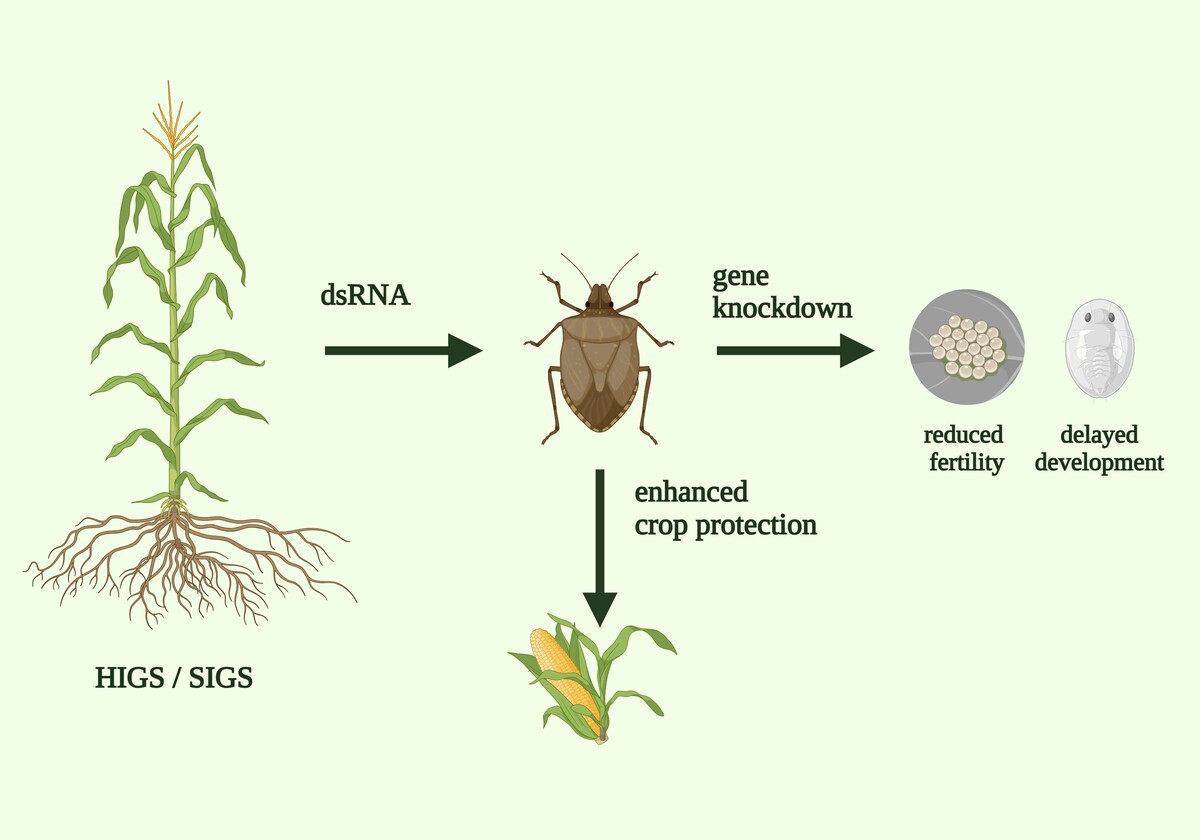REVIEW
RNA Interference for Hemipteran Pest Control: Mechanisms, Resistance Factors, and Advances in Delivery Systems
1
Institute of Biology, University of Opole, Oleska 22, 45-052, Opole, Poland
A - Research concept and design; B - Collection and/or assembly of data; C - Data analysis and interpretation; D - Writing the article; E - Critical revision of the article; F - Final approval of article
Submission date: 2025-08-01
Acceptance date: 2025-09-30
Online publication date: 2025-10-29
Corresponding author
HIGHLIGHTS
- RNA interference enables targeted gene silencing in hemipteran pest species
- Physiological, genetic, and environmental factors limit RNAi efficiency in Hemiptera
- Advances in delivery platforms enhance dsRNA uptake and stability
- Targeting guided by multi-omics delays resistance
- RNAi enables selective and eco-friendly pest control
KEYWORDS
TOPICS
ABSTRACT
RNA interference (RNAi) represents a species-specific and environmentally sustainable strategy for the control of hemipteran pests, including aphids, whiteflies, psyllids, and stinkbugs. This review integrates current knowledge on the molecular mechanisms of RNAi in insects and its translational applications in crop protection, with particular focus on host-induced gene silencing (HIGS, transgenic expression of dsRNA in planta) and spray-induced gene silencing (SIGS). The biological effects of gene knockdown – such as reduced survival, impaired development, and disrupted feeding – are discussed alongside physiological, genetic, and epigenetic factors limiting RNAi efficacy in Hemiptera. Key challenges include dsRNA degradation in the digestive tract, inefficient cellular uptake, and limited systemic spread. Recent innovations – including nanocarrier-based delivery, biodegradable formulations, and transplastomic expression – are critically evaluated. Similarly, advances in target gene identification using transcriptomic and proteomic approaches, as well as risk assessment tools for minimizing non-target effects, support the rational design of RNAi-based biopesticides. As RNAi technologies advance, their incorporation into integrated pest management strategies may facilitate species-specific, residue-free control of hemipteran pests while supporting the conservation of agroecosystem biodiversity.
CONFLICT OF INTEREST
The authors have declared that no conflict of interests exist.
Share
RELATED ARTICLE
We process personal data collected when visiting the website. The function of obtaining information about users and their behavior is carried out by voluntarily entered information in forms and saving cookies in end devices. Data, including cookies, are used to provide services, improve the user experience and to analyze the traffic in accordance with the Privacy policy. Data are also collected and processed by Google Analytics tool (more).
You can change cookies settings in your browser. Restricted use of cookies in the browser configuration may affect some functionalities of the website.
You can change cookies settings in your browser. Restricted use of cookies in the browser configuration may affect some functionalities of the website.




